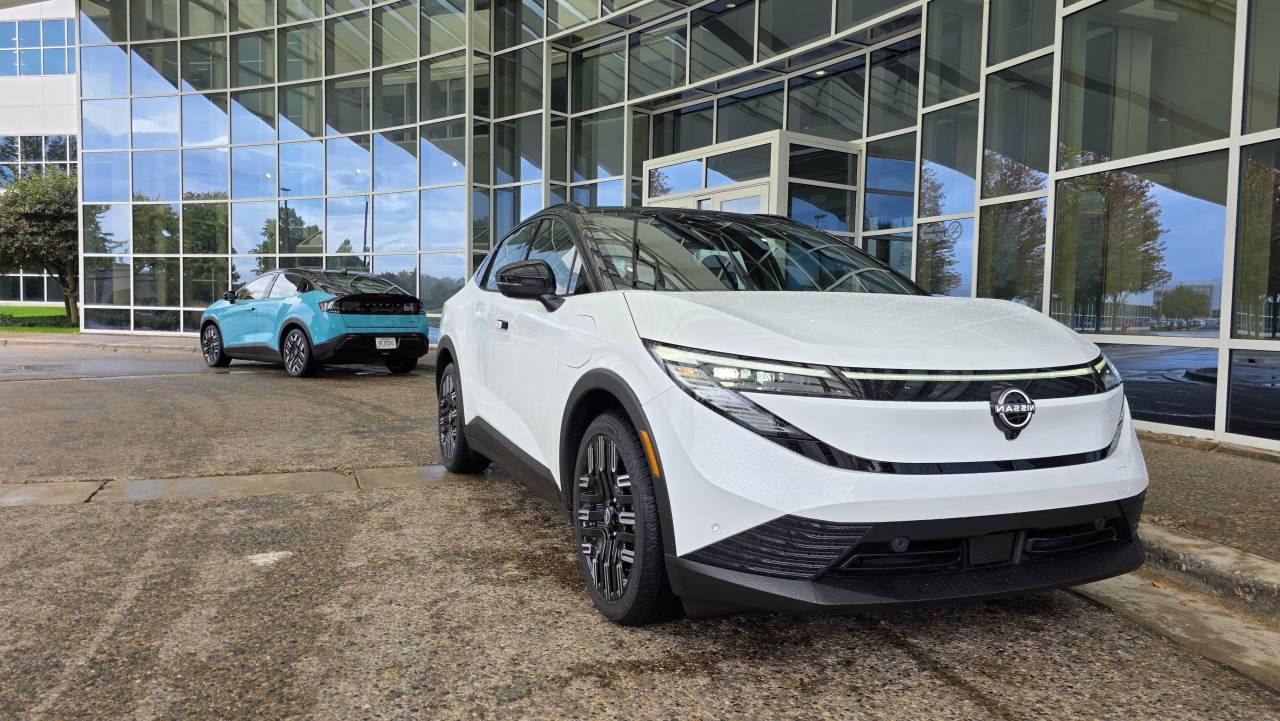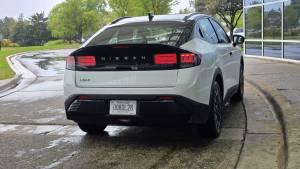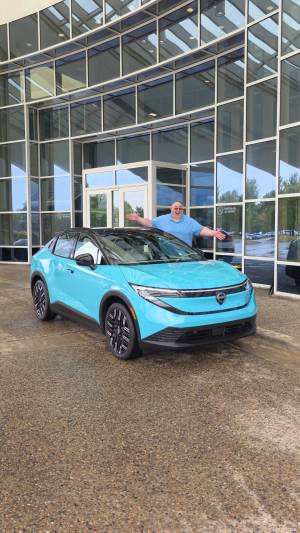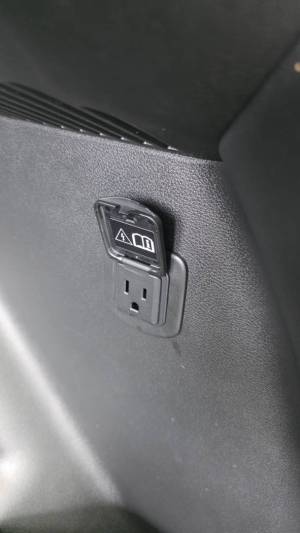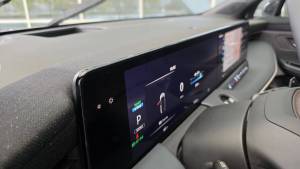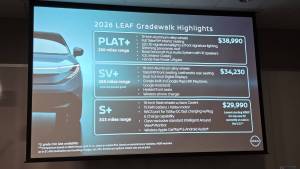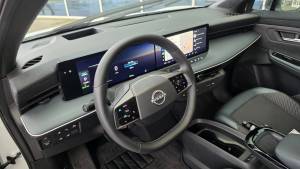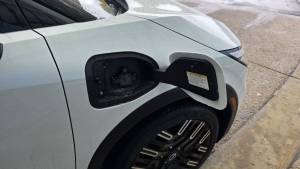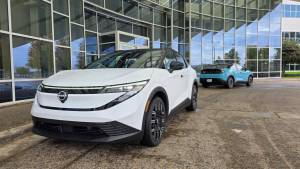The all-new 2026 Nissan LEAF starts at $29,990, delivers 303 miles of EPA-estimated range, and transforms from its hatchback roots into a genuine compact crossover. I spent two hours testing this third-generation electric vehicle on a rainy morning in Detroit, and despite less-than-ideal conditions, Nissan's redesigned EV impressed with crossover comfort, refined driving dynamics, and practical technology that makes daily commuting and weekend road trips genuinely viable. While the LEAF may be arriving at a politically complicated moment for electric vehicles in America, this is a vehicle that prioritizes practical transportation over environmental messaging - and that distinction matters.
Let's start with some credit where it's due - Nissan pioneered the mass-market electric vehicle. When the LEAF first arrived over 15 years ago, I was there for it at the 2008 Chicago Auto Show, and it genuinely felt revolutionary. Here was a practical, affordable electric car that heralded a future of clean, quiet driving that seemed right around the corner.
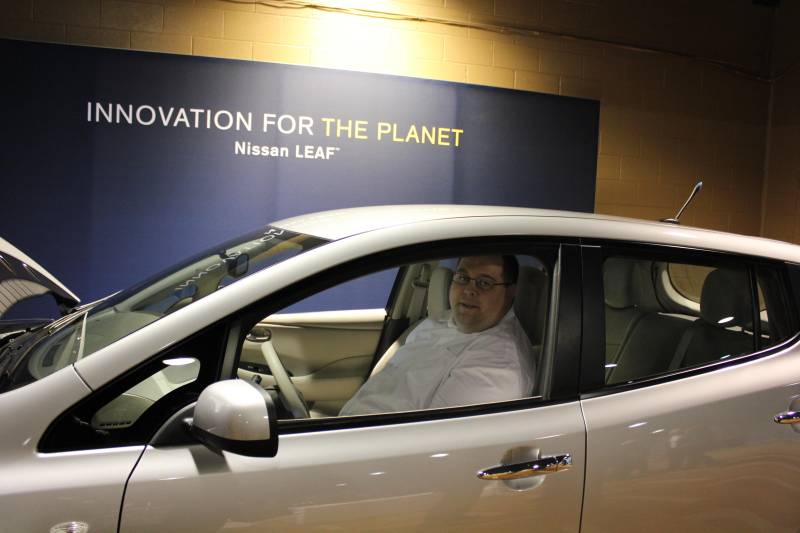
Unfortunately, that future has still not quite arrived for most Americans. The current political and social landscape has shifted away from the innovation needed to finally achieve EV parity with gas-powered vehicles - reduced rebates, less infrastructure investment, and a shortsighted retreat from clean transportation priorities. Thankfully, companies like Nissan and others in the auto industry understand that electric vehicles remain the inevitable future, and many customers still appreciate the refined, vibration-free luxury that internal combustion engines simply cannot deliver.
After spending a couple hours behind the wheel of the all-new 2026 LEAF on a rainy morning in Detroit, it became clear that Nissan hasn't abandoned their commitment to electrification. Far from it.
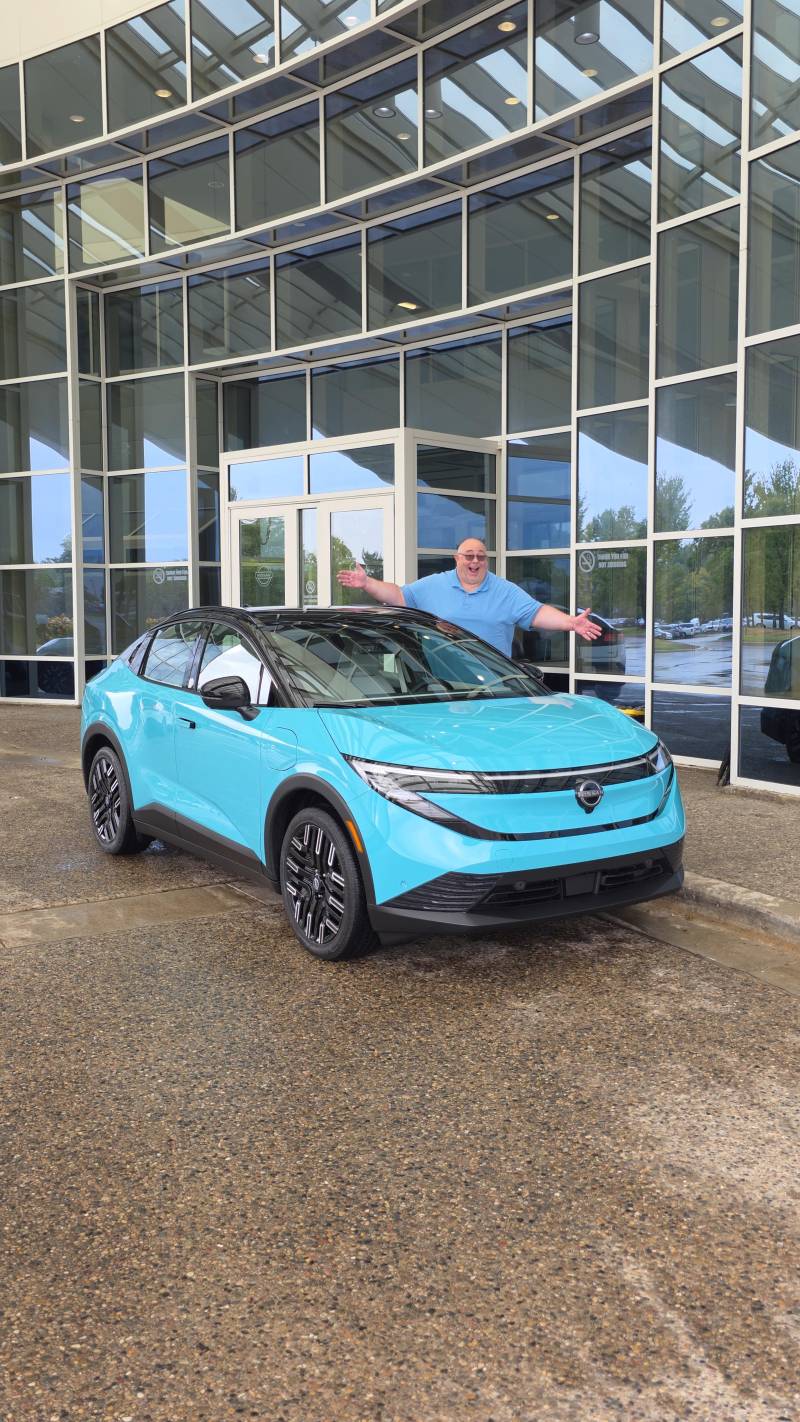
Crossover Design That Actually Works for Bigger Drivers
The first thing you notice about this third-generation LEAF is how much it's evolved from its hatchback roots. This feels like a compact crossover now rather than a "car" in the traditional sense, and I appreciate that Nissan chose a sloped rear design instead of the flat, station-wagon profile we've been seeing from other manufacturers. The SUV-like stance gives it road presence without feeling oversized, and those motorized flush door handles - a Nissan production first - add a premium touch you wouldn't expect at this price point.
Inside, even for a big guy like myself, the cabin felt spacious compared to similarly sized crossovers. The redesigned seats and flat floor create a surprisingly comfortable space, and the dual 14.3-inch displays in the upper trim levels frame a cockpit that feels genuinely modern without feeling alien. The available dimming panoramic roof, which transitions between opaque and transparent at the touch of a button, might sound gimmicky until you experience how it changes the cabin atmosphere and allows for extra headroom vs a movable moon roof.

Real-World Capability When Conditions Get Difficult
Driving any vehicle for the first time in rainy Detroit weather isn't ideal for building buzz, but it does provide an excellent test of fundamentals - traction, handling, visibility, and overall driving experience vs a meticulously manicured launch event. The LEAF performed confidently in all these areas, matching any comparable compact crossover I've tested in similar weather.
What separated this experience from a typical compact crossover test drive was the inherent advantage of electric powertrains. Less vibration, immediate torque response, and that characteristic EV quietness make even mundane rainy-day commuting feel more refined. The LEAF delivers sportier acceleration and smoother power delivery than you'd expect from something this practical and affordable.

Practical Features That Matter for Daily Driving and Weekend Trips
At $29,990 for the base S+ trim, the 2026 LEAF carries a lower starting price than the original 2011 model ($32,780), making it currently the most affordable new EV in America. More impressively, the SV+ trim at $34,230 costs $1,960 less than last year's model while delivering significantly more features and capability:
- 303 miles EPA-estimated range for S+ - eliminates daily charging anxiety for most commuters
- NACS compatibility with Plug & Charge - seamless access to 20,000+ Tesla Superchargers
- Liquid-cooled 75 kWh battery - charges 10-80% in 35 minutes
- Google built-in with Intelligent Route Planner - automatically maps charging stops along your route
- Vehicle-to-Load capability - 1,500 watts combined power for camping gear, tailgate equipment, emergency backup
- Intelligent Around View Monitor with Invisible Hood View - industry-exclusive camera technology for parking and tight spaces
- Available Bose Personal Plus audio - premium sound in upper trims
These aren't just luxury add-ons for an economy car, they're integrated features that enhance the LEAF's competitiveness as both a daily commuter and a weekend road trip vehicle.
The One Feature That's Missing
Experienced EV drivers will notice one significant omission - single-pedal driving. Nissan explained that this feature isn't popular in Japan, so they chose not to include it in this generation. For most buyers new to electric vehicles, this won't register as a concern. For those of us who've grown accustomed to the elegance of using a single pedal for both accelleration and regenerative braking though, the convenience and efficiency is something I would miss if chosing to buy the new LEAF.
However, it is ultimately a minor disappointment in an otherwise nearly perfect package.

Why This Preview Left Me Wanting More Seat Time
My brief Detroit test drive in less-than-ideal weather felt like a promising teaser rather than a comprehensive evaluation. The LEAF's composure in wet conditions, comfortable accommodations for larger drivers, and refined electric powertrain all impressed during limited exposure. The upper trim levels pack technology and features that genuinely enhance the ownership experience rather than serving as mere spec-sheet padding.
What became clear during those rain-soaked hours is that Nissan has created an electric vehicle for buyers who prioritize practical transportation and smart value over environmental virtue signaling. The 2026 LEAF positions itself as a sensible compact crossover that happens to be electric, rather than an electric vehicle that happens to be compact. That distinction matters more than you might think.
The all-new 2026 Nissan LEAF arrives at dealerships this fall, starting at $29,990 for the S+ trim, $34,230 for the SV+, and $38,990 for the PLATINUM+ grade.
